#NatureZen: Little Pinocchios
Words and photos by Melissa McMasters
On July 14, I was taking a masked-up walk through the Old Forest with one of our favorite Overton Park alumni, Brooks Lamb. (Here’s where I put in a plug for his book, Overton Park: A People’s History, which you can buy here.) We ran into the Conservancy’s Programs Manager Fields Falcone, who shared that she’d found an occupied hummingbird nest on the west side of the park. After running home to grab my camera, I followed her excellent directions and found the tiny cup, complete with the female ruby-throated hummingbird on top.
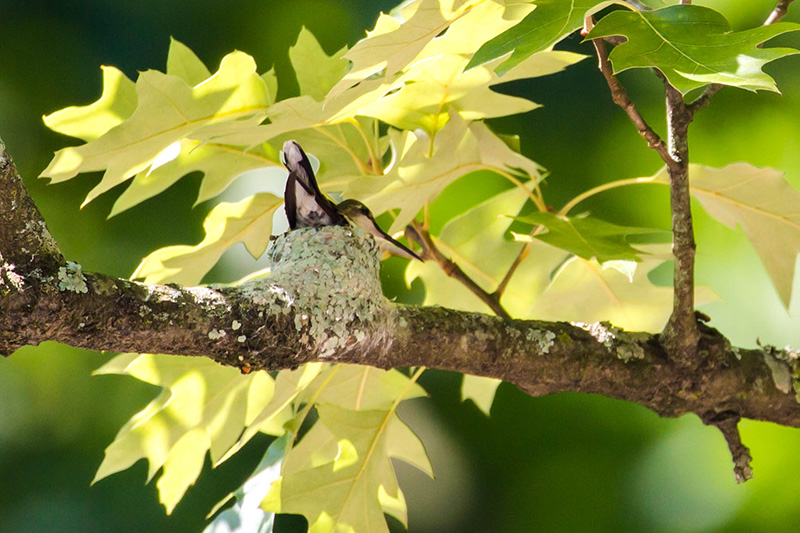
Hummingbird nests are about two inches across and one inch deep, and because they’re well over our heads, it’s easy to confuse them with a patch of lichen. This is because the hummingbird pulls lichen from tree branches and coats the outside of her nest with it. The interior is composed of the soft down of spent dandelions or cottonwoods, held together with silk from spider webs. The soft materials mean that the nest can expand to accommodate the babies once they hatch.
A little over a week later, on July 22, I got the first tiny glimpse of the bill of a nestling! You can see it right near the middle of the nest.
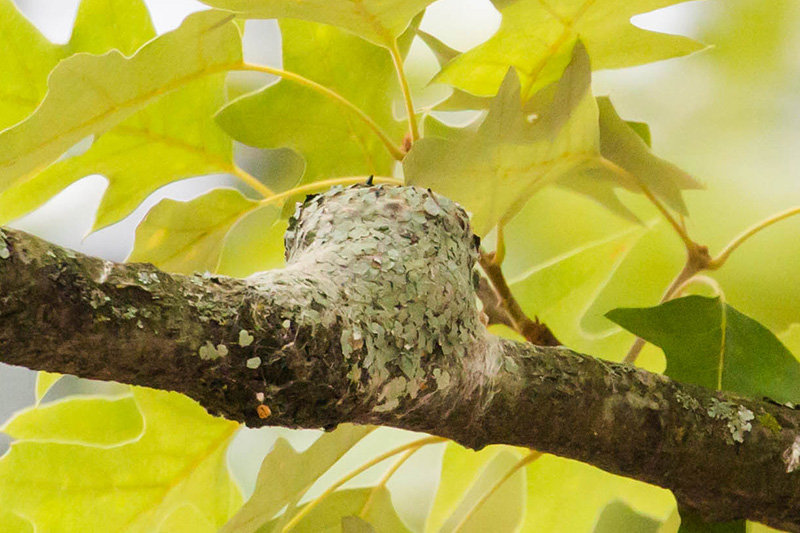
On July 27, I got to watch the female hummingbird feed her two babies for a few minutes. The female takes sole responsibility for nest building, incubation, and feeding the baby birds. (The male doesn’t stick around after mating, but that may be by design: his bright red throat feathers are more likely to attract predators than the female’s more drab coloration.) Here, she’s probably feeding them small insects to get protein into their systems. We often think of hummingbirds as subsisting on nectar, but quite a bit of their diet is arthropod-based: spiders, mosquitoes, gnats, and even small bees.
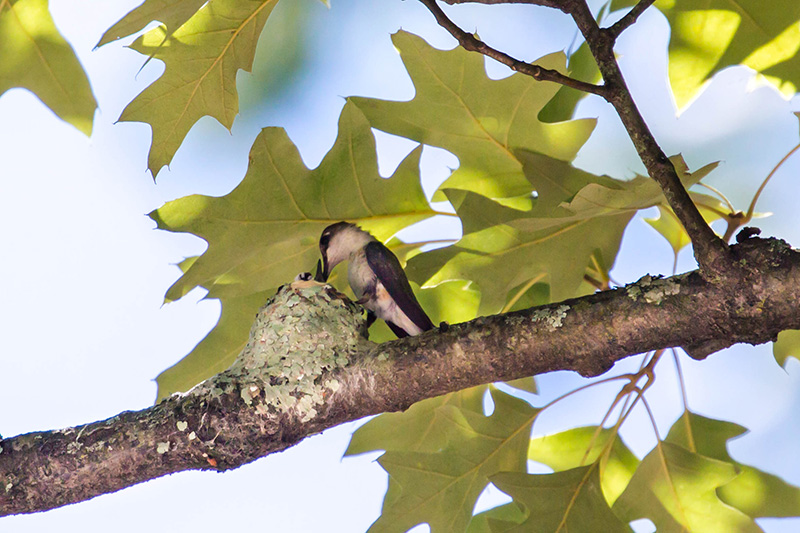
On many of my visits to the nest, the female hummingbird was out gathering insects or nectar, but on this occasion, she was watchful, sometimes hovering beside the nest. The chicks, though they are blind for the first week or so, can feel the wingbeats of their mother. This signals them to open their mouths and receive food.
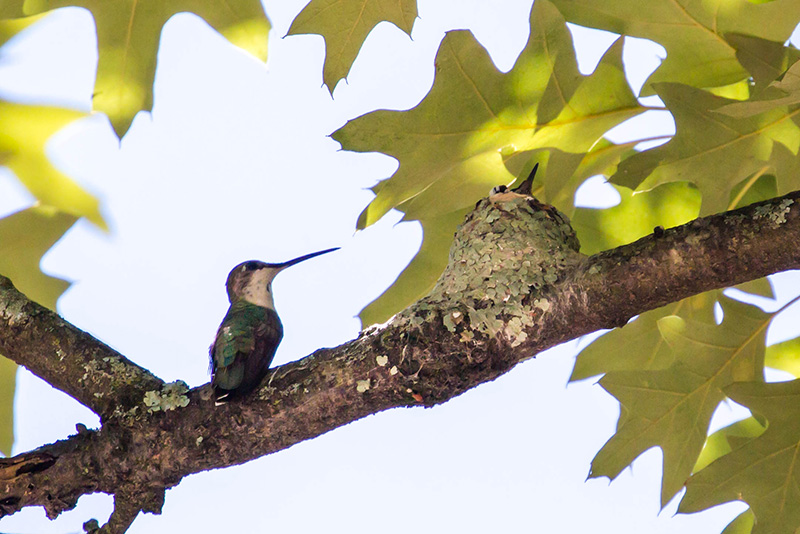
At times, the female perched in a higher branch and kept a watch on the nest below. Hummingbirds are combative creatures and won’t hesitate to fight off a threat.
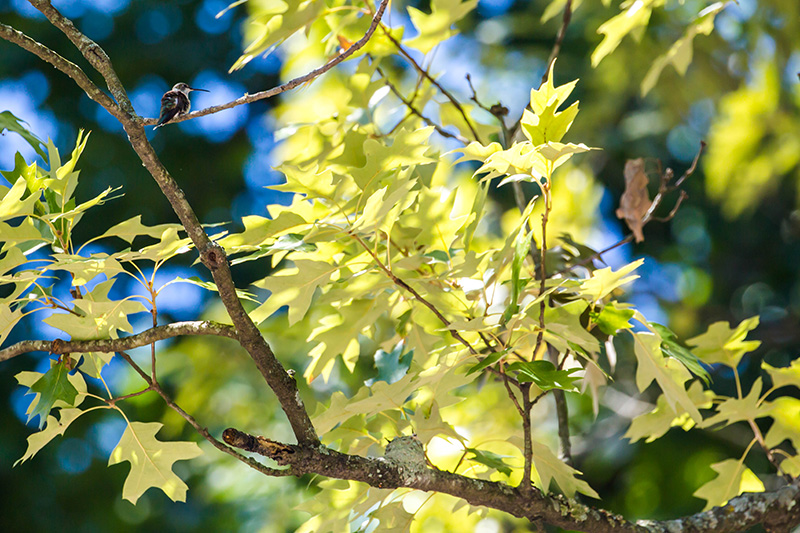
The next day, July 28, I finally caught a glimpse of the nestlings’ faces! Hummingbird chicks typically incubate in their eggs for about two weeks, and then remain in the nest for 18-22 days after hatching. Once they begin peeking their heads over the top of the cup, it’s only a matter of days before they start to test their wings. It’s amazing to think that in the first photo, the chicks may have already hatched and were tiny jellybean-sized birds on the bottom of the nest.
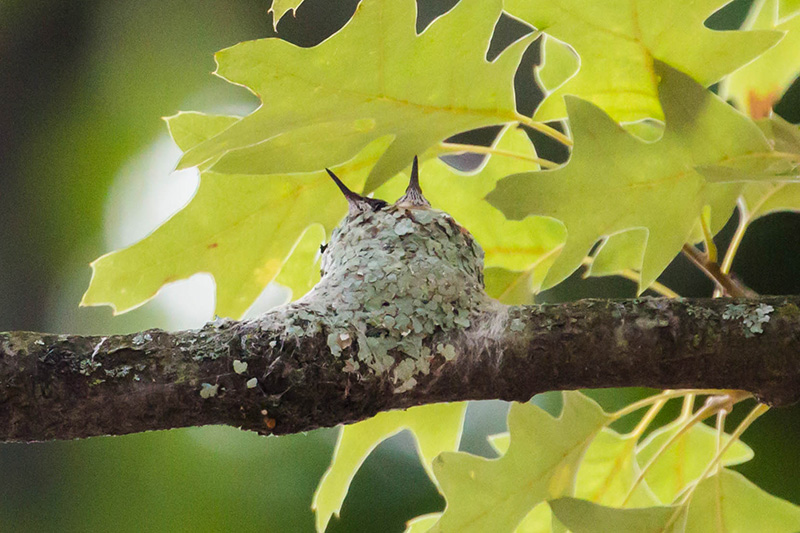
Here are the chicks two days later, on July 30. They’re starting to look more like their parents, although their bills are still quite a bit shorter than the adults’. (Watching hummingbirds grow is a bit like watching Pinocchio!) They spent a good deal of time preening their feathers and testing their wing strength to prepare for their first flights.
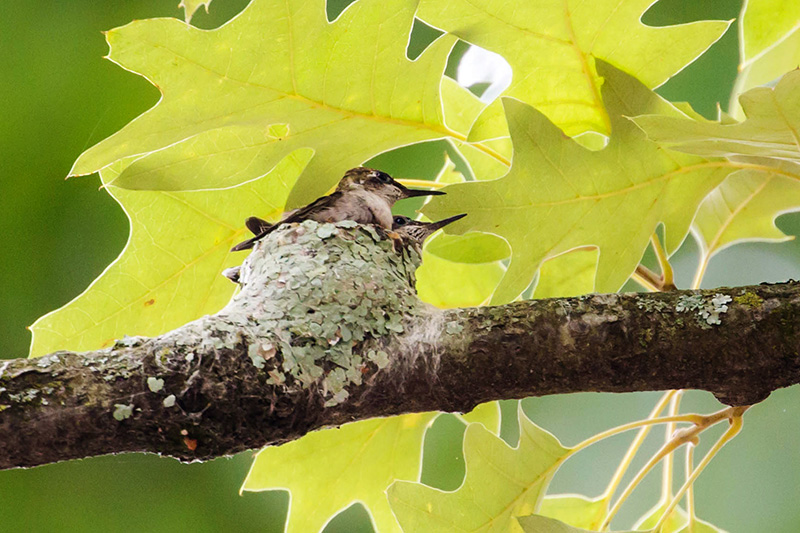
My last glimpse of the chicks was on August 1, when one of them provided me with a good view of its still-short tail feathers. The birds were now big enough to leave the nest, and they won’t return again, which makes it hard to give this journey a proper conclusion. But if everything went well, the mother would have watched over the fledglings for a few more days, guiding them toward food sources. Now that they’re on their own, they’ll have to find enough food to keep up with their lightning-fast metabolism–hummingbirds eat about half their body weight in food every day!
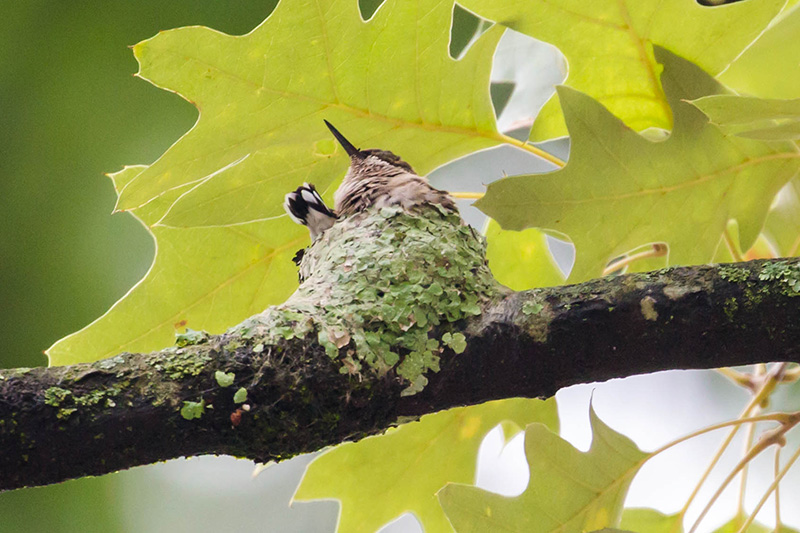
Ruby-throated hummingbirds can breed two or three times in a summer, extending into July, so this was probably the female’s last brood of the year. It looks like it was a success! We hope you enjoyed watching these chicks grow up as much as we did.
Missed previous editions of #NatureZen? They’re all archived on our website.



